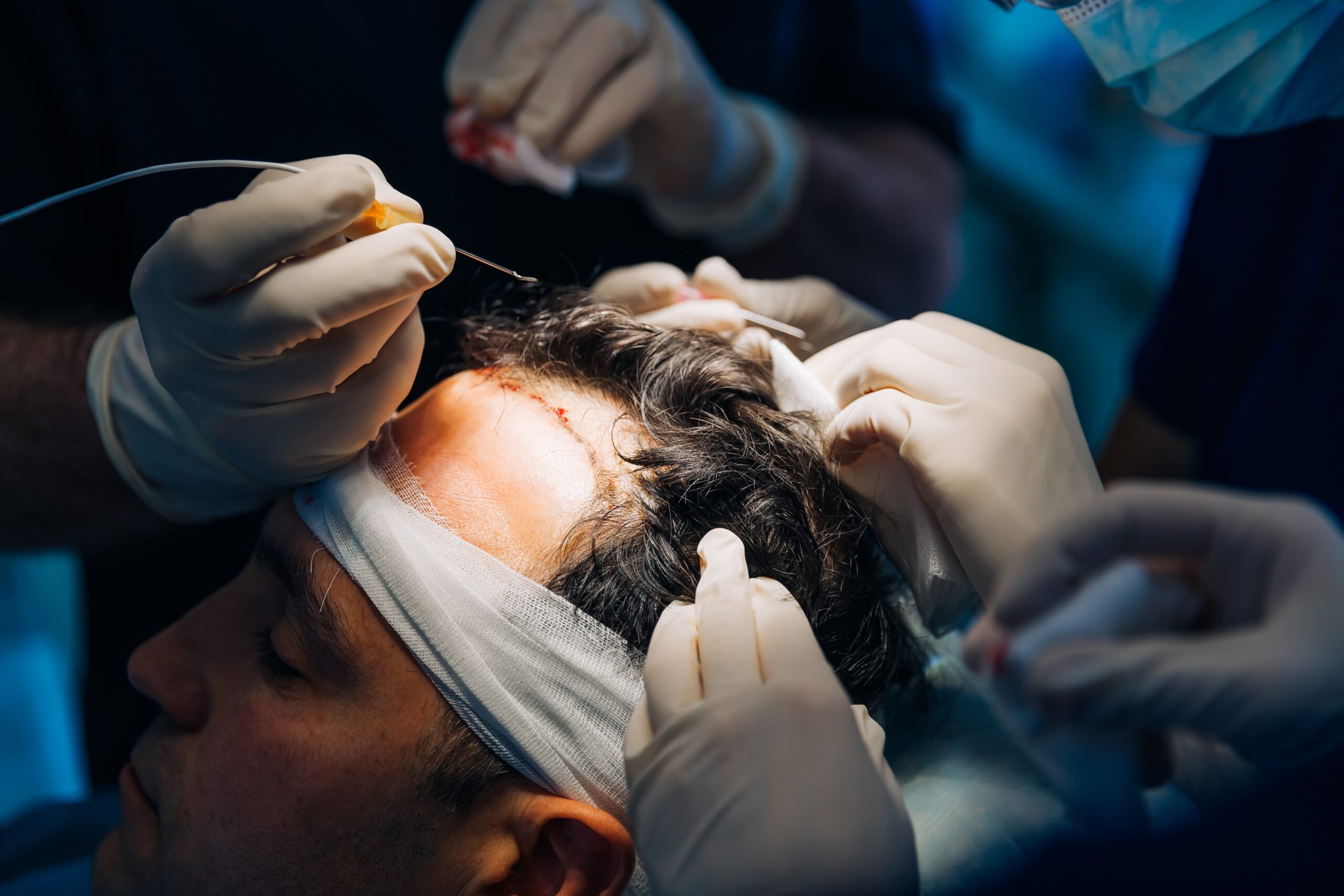Hair transplant surgery is generally considered safe, but like any surgical procedure, it can have potential side effects and risks.
Some of the common side effects of hair transplant surgery include…
- Pain and Discomfort – Mild pain and discomfort in the donor and recipient areas are common after the surgery. This can usually be managed with over-the-counter pain medication prescribed by your surgeon.
- Swelling – Swelling of the scalp, particularly in the forehead and around the eyes, can occur a few days after the surgery. This is temporary and usually subsides within a week.
- Itching – Itching in the donor and recipient areas is common during the healing process. Your surgeon may provide instructions on how to manage this discomfort.
- Bleeding – Some bleeding may occur during and immediately after the surgery, but it is usually minimal and stops on its own. Persistent bleeding may require medical attention.
- Infection – Infection is a potential risk after any surgical procedure. Your surgeon will provide instructions on how to care for your scalp to minimize the risk of infection.
- Scarring – While hair transplant techniques have advanced significantly, scarring in the donor area is still possible, particularly with certain methods like strip harvesting. Newer techniques such as Follicular Unit Extraction (FUE) tend to result in less noticeable scarring.
- Shock Loss – Some of the existing hair in the recipient area may fall out temporarily following the transplant procedure. This is known as shock loss and is usually temporary, with hair regrowth occurring within a few months.
- Numbness or Tingling – Temporary numbness or tingling in the scalp may occur after the surgery, particularly in the donor area. This typically resolves over time but can persist in rare cases.
- Cysts – Small cysts may develop in the recipient area following the transplant. These are usually harmless and can be treated by your surgeon if necessary.
- Unnatural Appearance – The transplanted hair may not grow in a natural-looking pattern, or the density may not meet the patient’s expectations. This can sometimes require additional procedures or adjustments.
Discuss these potential side effects and any concerns you may have with your surgeon before undergoing hair transplant surgery. Following your surgeon’s post-operative care instructions can help minimize the risk of complications and promote optimal healing.





